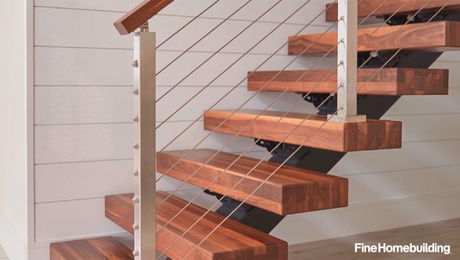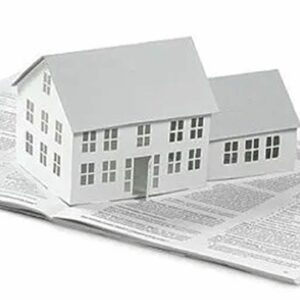Hello. I’m new to Taunton but received fabulous advice from people last year through my Mother in law about creating a garden in Brooklyn.
My new question has to do with insulation. My husband and I have lived in our apartment for one year and never want to experience another winter like the one we’ve just had.
Our building (a brownstone in Brooklyn Heights, just over the Brooklyn Bridge) was built in 1835. Our bedroom is an extension from the main building with another apartment below us, and a deck on the roof above us.
Since our apartment is on the “parlor floor”, we have 12 ft high ceilings throughout, and three 9-foot windows in the bedroom. It is heated by two radiators that are on a boiler system (we’ve had them inspected and the heat doesn’t seem to the be problem). We have invested in honeycombed blinds for the windows in an attempt to keep more heat in. Also, the windows were replaced just before we bought them with double-paned glass.
However, despite all this effort, this winter, it often got so cold in the bedroom that we had to abandon it altogether and sleep in our second bedroom, which is closer to the center of the house.
The walls of the bedroom were very cold to touch in the winter so clearly, there is an insulation problem. This was confirmed when my husband redid the closet, and we discovered that the walls consist of the outside brick, next two inches of empty space, then old wood slats, then very old plaster holding drywall, and then 1 and 1/2 inches of plaster. We don’t want to tear down the walls completely to put in insulation so my question is, what other options to we have to make the room livable during cold conditions???
I’ve heard of spray-in insulation. Is this a viable solution?
Many thanks in advance!


















Replies
Since nobody else has touched this one yet, I will.
I've heard of spray-in insulation. Is this a viable solution?
Not really. The airspace between the brick and the interior wooden wall is needed so that the brick can dry out when it gets wet. Brick absorbs water from the outside when it rains. It also lets in water through cracks. The air space allows the water to drain and allows for some small air circulation to dry out the brick. If you fill that airspace with expanding foam insulation you may have problems with moisture in your wall.
You can add insulation in rigid sheets to the outside, and then cover it with another layer of siding. Or you can make some sort of temporary insulating panels covered in fancy fabric or something, and put them against the walls inside the room.
I'm not aware of any good options. Especially if this is a rental.
Hang rugs on the walls?
I hope somebody here will have a better answer for you.
I think Glatt is right on the insulation; where is the thermostat? It may be that you just have to throw more heat into that room. There are thermostatic radiator valves you attach right to the radiator, so that the radiator in the cold room gets more steam. My bro has one from these guys http://www.honeywell.ca/braukmann/ . Other than tapestries, rugs and space heaters (an electric radiator type is pretty safe for a bedroom) that's about it.
and remember that was the coldest January since 1888. It probably won't be that bad for anothe 116-
"we discovered that the walls consist of the outside brick, next two inches of empty space, then old wood slats, then very old plaster holding drywall, and then 1 and 1/2 inches of plaster."
It sounds like you have some freedom to make changes, if you re-did the closet; even if it is a rental? That also sounds like pretty unusual construction: "1 and 1/2 inches of plaster" is way thick? Still, I'm down here in the south... It's a different world up there.
As I see it, the only practical way is to insulate the room, walls and ceiling. Either by removing some of the "layers" down to sheetrock or wood. Then put up a layer of foam insulation at least 3/4" (thicker would be even better). I'd use foam with a foil vapor/radiant barrier and foil tape all seams. Then drywall it... Not an inexpensive answer, I know. Adding storm windows would also help.
In that old bldg. it's probably a better idea to just "pump more heat to it" like someone said.
Hi Philippa, Welcome to Breaktime. I'm not a professional but maybe I can help.
we have 12 ft high ceilings throughout, and three 9-foot windows in the bedroom.
That's a lot of glass even if it is double-paned. As a previous poster mentioned movable foamboard panels can be cut to fit in the windows and covered decoratively without the complexity of permanencies until you see where your problems lie. Or heavy drapes. Allow some air flow in your window cavity to prevent overly amounts of condensation. A lot of your bedroom heat is moving through there.
with another apartment below us, and a deck on the roof above us.
At least your floor is receiving some warmth from below so that's a plus, but normally if insulating you have to add some insulation to the ceiling/roof before attention to the walls. However, your number one priority is stopping any infiltration of outside air into the house as that will rob your heat tremendously.
In an old building like that you'll have plenty of air exchange unless you really go to extremes in sealing the structure.
it often got so cold in the bedroom that we had to abandon it altogether and sleep in our second bedroom, which is closer to the center of the house.......... The walls of the bedroom were very cold to touch in the winter
It may be that the bulk of the heating problem lies here in the bedroom with the glass and cold walls. Is the bedroom the problem child as the rest of the house stays fairly acclimated to your comfort zone?
If you could add more defining details to your situation, there are those who visit here with more experience that might be able to give you more precise answers.
we discovered that the walls consist of the outside brick, next two inches of empty space, then old wood slats, then very old plaster holding drywall, and then 1 and 1/2 inches of plaster.
Are there framing studs holding up all this? If so, my guess is there is empty space between the studs with a source of outside air circulating inside those stud cavities.
I've cut in holes for electrical boxes in homes built like this and suddenly found howling noise literally like a freight train from winds circulating in there.
That means the cold winter winds have only the thickness of your plaster separating you from those freezing winds.
If your walls are constructed as this then there is the place for your added insulation.